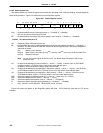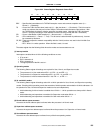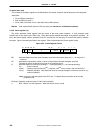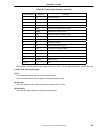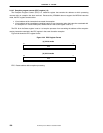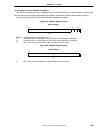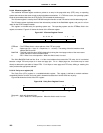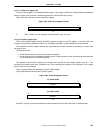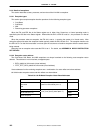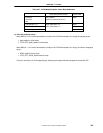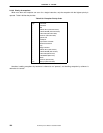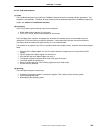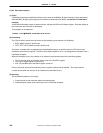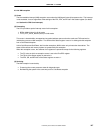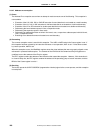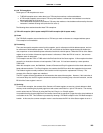
CHAPTER 2 V
R
4120A
142
Preliminary User’s Manual S15543EJ1V0UM
2.5.4 Details of exceptions
This section describes causes, processes, and services of the V
R
4120A's exceptions.
2.5.4.1 Exception types
This section gives sample exception handler operations for the following exception types:
Cold Reset
Soft Reset
NMI
Remaining processor exceptions
When the EXL and ERL bits in the Status register are 0, either User, Supervisor, or Kernel operating mode is
specified by the KSU bits in the Status register. When either the EXL or ERL bit is set to 1, the processor is in Kernel
mode.
When the processor takes an exception, the EXL bit is set to 1, meaning the system is in Kernel mode. After
saving the appropriate state, the exception handler typically resets the EXL bit back to 0. The exception handler sets
the EXL bit to 1 so that the saved state is not lost upon the occurrence of another exception while the saved state is
being restored.
Returning from an exception also resets the EXL bit to 0. For details, see APPENDIX A MIPS III INSTRUCTION
SET DETAILS.
2.5.4.2 Exception vector address
The Cold Reset, Soft Reset, and NMI exceptions are always branched to the following reset exception vector
address. This address is in an uncached, unmapped space.
BFC0_0000H in 32-bit mode (virtual address)
FFFF_FFFF_BFC0_0000H in 64-bit mode (virtual address)
Vector addresses for the remaining exceptions are a combination of a vector offset and a base address.
64-/32-bit mode exception vectors and their offsets are shown below.
Table 2-36. 64-Bit Mode Exception Vector Base Addresses
Vector Base Address (Virtual) Vector Offset
Cold Reset
Soft Reset
NMI
FFFF_FFFF_BFC0_0000H
(BEV bit is automatically set to 1)
0000H
TLB Refill (EXL = 0) 0000H
XTLB Refill (EXL = 0) 0080H
Other exceptions
FFFF_FFFF_8000_0000H (BEV = 0)
FFFF_FFFF_BFC0_0200H (BEV = 1)
0180H



